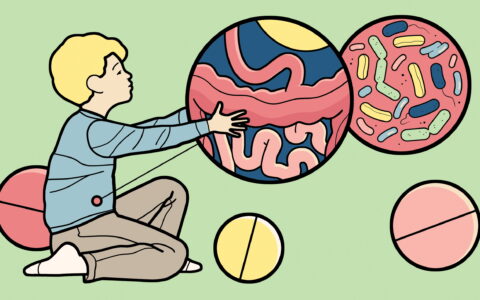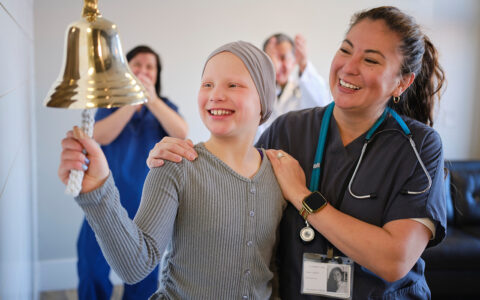Treatment of uncontrolled, moderate-to-severe asthma in children with dupilumab was recently evaluated by an international research team led by Leonard B. Bacharier, M.D., the Janie Robinson and John Moore Lee Chair in Pediatrics at Vanderbilt University Medical Center.
“We need not be tolerating severe, uncontrolled asthma in children in 2023.”
Their findings, published in The New England Journal of Medicine, produced an expanded indication for the medication, already being prescribed for adolescents and adults.
“We need not be tolerating severe, uncontrolled asthma in children in 2023,” Bacharier said. “We have great, effective therapies for them, and we should not tolerate prednisone every year for asthma.”
Seeking More Options
Asthma exacerbations can be quite dangerous, potentially even life threatening. Even in their less severe forms, they can result in days lost from school or work, trips to an emergency department and possibly long-term effects, according to Bacharier.
“We really have to be cognizant, not only of the immediate respiratory risk that comes with exacerbations, but the cumulative steroid risk that these exacerbations bring upon these children.”
“The other side of exacerbations is that the standard of care for their management is oral steroids, and we have known for a long time that oral steroids are an essential, but not side-effect free therapy,” Bacharier said. He explained that with steroid use a child with asthma could potentially face enhanced risks of infections, gastrointestinal bleeding, bone fracture, and other serious impacts.
“We really have to be cognizant, not only of the immediate respiratory risk that comes with exacerbations, but the cumulative steroid risk that these exacerbations bring upon these children,” Bacharier said.
The VOYAGE Trial
Unlike a steroid, dupilumab is a monoclonal antibody designed to inhibit inflammatory signaling involved in the pathogenesis of asthma. Dupilumab had been evaluated in adolescents and adults with severe eosinophilic asthma and was found to be highly effective. This prompted Bacharier’s group to institute a worldwide, placebo-controlled, phase 3 trial (VOYAGE) involving 408 children between the ages of 6 and 11 years. Included patients had moderate-to-severe asthma and were on a medium or high dose of inhaled corticosteroid (ICS) treatment and a second controller medication, or high-dose ICS alone. Results, he explained, were very similar to those for adults.
“Over a year, we were able to show that children had a marked reduction in the frequency of severe asthma exacerbations.”
In children who had a blood eosinophil count at or above 300 cells/mm3, there was a 65 percent reduction in the rate of annualized severe exacerbations over 52 weeks with dupilumab treatment every two weeks compared with placebo, which was significant.
“Over a year, we were able to show that children had a marked reduction in the frequency of severe asthma exacerbations, or bad asthma attacks, that would normally have landed them on a course of oral steroids, or in the emergency department or in the hospital,” Bacharier said.
He also the drug improved their lung function, symptom burden and daily experience with asthma. Side effects were infrequent and nonserious. Because of the results of this study, the U.S. Food and Drug Administration extended the indication for this agent to children as young as 6 years of age for the treatment of asthma.
“That has since made it available to a large number of children who previously had fewer options for the management of their difficult asthma,” Bacharier said.
Looking Ahead
Bacharier and his team plan to address some remaining questions. One involves following children for a second year. Preliminary evidence suggests benefits persist during that year and without new safety signals, he said.
“I can now look at some of these patients and give them a sense of positivity and hope that before I never really could get them to – this is different.”
A second question is how long patients need to sustain this therapy. In adults, patients typically cannot come off the therapy after starting it without a return of symptoms, Bacharier says. In children, the situation may be more favorable, with treatment before airways have become badly damaged, but this remains unclear.
A next phase of research by Bacharier’s group will examine use of dupilumab in children with asthma as young as 12 months, and whether the earlier use provides benefits or may change the course of the disease.
“As somebody who’s taken care of this disease for a long time, I can now look at some of these patients and give them a sense of positivity and hope that before I never really could get them to – this is different,” Bacharier added, reflecting on the impact of dupilumab and its treatment class in managing asthma.






